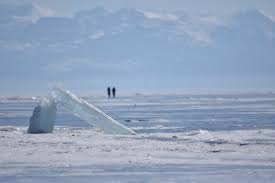Thawing Arctic Permafrost and the Potential Menace of the Reanimated Zombie Virus
A detailed investigation that was published in The Guardian states that there is a genuine chance that the Arctic’s thawing permafrost might release a “reanimated virus,” which would result in a global health calamity. The risks linked to the once-frozen ice have increased due to the rapid thawing caused by global warming. The slow thawing of the Arctic might cause a major global health problem. In light of new scientific findings, experts are warning of potential dangers hidden beneath the Arctic’s icy layers.

Table of Contents
The Submerged Peril Below the Frozen Surface Zombie Virus
Renowned Aix-Marseille University geneticist Jean-Michel Claverie emphasizes how critical it is to concentrate on studying diseases that start in the south and move north. He skillfully draws attention to a serious oversight: the failure to keep an eye on outbreaks that start in the northernmost regions of the country and spread south.
Furthermore, the renowned Erasmus Medical Center in Rotterdam’s scientist Marian Koopmans concurs, noting, “We don’t know all the viruses in permafrost, which is a real danger as a virus might start an epidemic.” Her example is a historical case of polio, which she uses to highlight how such deadly situations could arise.

- Zombie Virus
Zombie viruses can infect single-celled organisms even after thousands of years of survival in permafrost. By resurrecting viruses from 48,500-year-old samples, a group of scientists led by Claverie in Siberia in 2014 validated this observation. Nonetheless, it is imperative to keep in mind that the reanimated viruses only impacted amoebas without endangering people directly. Claverie argues that even though certain viruses, like those found in Siberian permafrost, can infiltrate amoebas, it doesn’t always follow that these viruses would infect humans.

Beyond the Arctic: A Universal Predicament
An important problem arises when we consider the extent to which the Northern Hemisphere of the planet is covered in permafrost and nevertheless supports the Arctic tundra and boreal forests of Canada, Alaska, and Russia. Climate experts predict that mean temperatures in this region will rise significantly earlier than the global warming average.
The world’s population’s security and well-being are in jeopardy; therefore, managing the complexity of climate change necessitates ongoing attention to detail and proactive measures to lessen these unforeseen effects. All things considered, there is a global threat posed by the concerns connected to the melting of Arctic permafrost and the possible unleashing of ancient pathogens. Researchers stress that more work has to be done to fully comprehend the makeup of these viruses and the possible health hazards they pose to people.
Zombie Virous called
The scientists named the virus Pithovirus sibericum because its shape resembled the ancient Greek wine jars called “pithos.” Fortunately, it appears that the primary threat that this zombie virus poses is to the microscopic amoeba population.
Related to health: Remarkable Advances in COVID-19 Cases Control in India Despite New Variants Beyond JN.1


